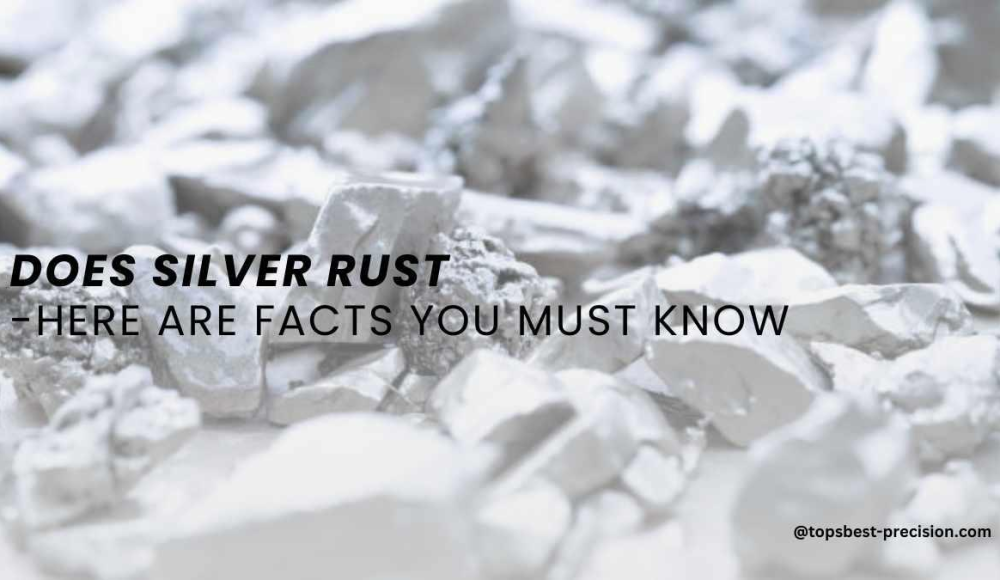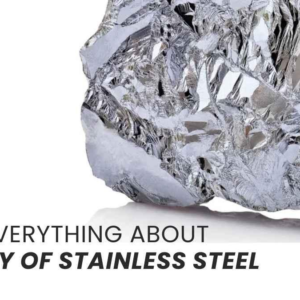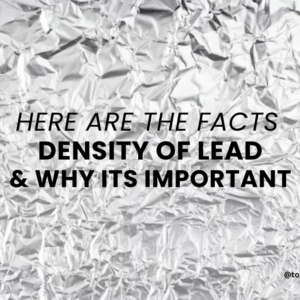銀は審美的な製品を製造するための貴金属とみなされています. 外観は光沢があり、腐食しにくいです。. しかし, 銀は鉄や鋼と違って錆びないのかという質問がよくあります。; シルバーは鉄のように変色しません, 湿気や酸素に触れると錆びます, 酸化鉄を形成する. それにもかかわらず, それはまだ変色に反応します, これにより、銀の光沢のある外側の層が灰色になります。. 変色は通常、銀が硫黄化合物と接触して硫化銀と呼ばれる黒色の化合物を形成するときに起こります。. 色の変化は表面から取り除くことができますが、錆などの有害な影響はありません。.
シルバーとは?
シルバーは表面に光沢がある, 延性のある, 熱と電気の両方をよく運びます. それは次のような化学元素です。 記号Ag そして の原子番号 47. シルバーは歴史的にジュエリーの製造に使用されてきました, コイン, エレクトロニクス, およびその他の多数のアプリケーション. シルバーは加工しやすい金属です. ほぼあらゆる形状に簡単に成形および操作できます。. さらに, 非吸湿性です, 非酸化性, 非腐食性. 要素は派手な装飾に適用されます, カトラリー, 電池, 太陽電池, 生体システムとの互換性により、その他の電子機器や医療機器に使用されます。, と導電性.
銀は錆びますか?
銀, その特別な方法で, 錆びると予想されるような腐食はしません. 錆び・腐食は鉄と鉄の間で起こります。 鋼鉄. 水と酸素が結びついて酸化鉄が生成される状態です. 銀は鉄で構成されていません. したがって, それは言えません, それは侵食するということ.
しかし, シルバーは時間が経つと黒くなったり、くすんだりすることがあります. 周囲の大気中の硫黄や硫黄を含む物質に触れると変色が促進され、表面に黒い硫化銀の層を形成します。. この変色により、シルバーの魅力が損なわれ、黒っぽく見えます。. したがって, 錆が鉄を弱めるようには弱めない.
シルバーの変色と錆びの比較
変色と錆はどちらも金属に影響を与える腐食の形態を指します。, それらは重要な違いがある別個のプロセスです:
変色する (銀)
- 原因: ステインは、銀が大気中の硫黄含有化合物にさらされて表面に黒色の硫化銀が形成されることで形成されます。.
- 外観: 変色は通常、表面に暗い/鈍い色の膜として形成されます。, 通常は灰色から黒の色合いになります.
- 金属への影響: 変色は、素材の内部システムを損なうことなく、シルバーの上に層を作成するだけです。. 洗剤で簡単に洗える, それは処分されることになる.
- 救済策: 変色防止布を使用して密閉容器に銀を保管すると、変色を防ぐことができます。. さらに, シルバーメタルを最も頻繁に磨くことができます.
錆びる (鉄・鋼)
- 原因: 通常、鉄/鋼が湿気と接触すると発生します。.
- 外観: さびは赤茶色またはオレンジ色のフレーク状の形成として表面に発生します。.
- 金属への影響: 錆は金属を劣化させ、最終的には, 構造内および構造上の完全性を損なう. やがて, 錆びると材料に亀裂が生じる可能性があるため、, 素材にとっては大きな挑戦だ.
- 防止: 錆の発生は、塗装または亜鉛メッキ処理によって止めることができます。. 金属を低湿度の場所に置くこともできます.
主な違い
- 影響を受けるマテリアル: シルバーに変色が起こる. 錆びが発生している間に、 銅, 鉄, と鋼.
- 金属への影響: 変色は金属製品の表面にのみ影響しますが、錆はより深く進み、金属製品に損傷を与える可能性があります。.
- クリーニング: 金属の変色は洗浄工程で簡単に除去できます。, 錆びながら拭く場合は削ったり薬液が必要になる場合があります.
変色に影響を与える要因 (錆びない) 銀の
シルバーの変色の速度と程度には、いくつかの要因が影響します。:
1. 硫黄化合物への曝露
シルバーは鉄のように変色しません, 湿気や酸素に触れると錆びます, 酸化鉄を形成する. これらの化合物は、ゴムから私たちが呼吸する空気に至るまで、さまざまな製品に広く使用されています。, 卵などの食品は変色プロセスを促進する可能性があります. 硫黄は銀と反応します, 金属の表面に硫化銀の黒い層を形成します。.
2. 湿度と湿気
湿気の多い空気は変色の進行を早めます。, 特に湿った空気にさらされた場合, 水, そして湿気.
3. 化学物質および汚染物質との接触
化学物質への曝露がシルバーの変色の主な原因と考えられています. 家庭用洗剤にさらされると金属の溶解能力が増加します, そして香水. その上, 工業地帯で見られる二酸化硫黄などの他のガスも、表面の変色を引き起こすことが知られています。.
4. 皮脂や化粧品が付着した商品の取り扱いについて
シルバーのジュエリーを身につけると, 皮脂によって汚れてしまいます, 化粧品, ローション, そしてあなたの香水さえも. かなり薄い表面層が堆積し、汚染物質や湿気を捕捉して変色を促進する可能性があります。. 頻繁な清掃とメンテナンスによってこの影響を軽減することが可能です.
5. 合金組成
シルバーの変色は、銀の特定の組成にも依存します。 合金. 例えば, スターリングシルバーで作られています 95% 銀と 10% 銅の. 銅 銀よりも反応性が高く、酸化すると変色します。. 上質な銀の成分は、 1000 パーツはシルバーに 1 部分銅または 99.9% 銀. 変色しにくいです. しかし, 上質なシルバーは時間の経過とともに変色する可能性があります.
シルバーの変色を防ぐ方法?
しかし, シルバーは美しく見えますが、黒くなり、光沢が失われる可能性があります. それにもかかわらず、, 銀色の色合いを維持するために保存することができます. シルバーの変色を防ぐ効果的な方法をいくつか紹介します。:
1. シルバーを適切に保管する
シルバーの変色を防ぐためには洗浄が最も重要です. 湿度が高いと変色が早まります, それを遅くするために, シルバーは密閉容器に保管するか、変色した袋を使用してください。. 通常、表面から硫黄を除去するのに役立つ化学物質が注入された変色防止布を使用することもできます。, それによって, 変色を軽減する.
2. 変色防止ストリップを使用する
変色防止ストリップは、空気中の硫黄含有ガスを除去する働きがあります。. それで, シルバーの変色を防ぎます. これらのストリップは収納ボックスの中に入れることができます, 引き出し, または展示ケース. ストリップは頻繁に交換する必要があり、継続的な保護が得られます.
3. シルバーを定期的に掃除してください
表面に変色が蓄積した場合, それを取り除くには大規模な掃除が必要になります, でも定期的に掃除していれば, 多少の変色は問題ありません. このために, 柔らかい布を湿らせてシルバー製品を磨きます. 深い変色の場合は、シルバー用の変色除去剤を使用してください。. シルバーを洗浄する際は強い機械的作用を使用しないでください。. 銀の表面に傷やその他の損傷を与える可能性があります.
4. シルバー磨き服を使用する
シルバー磨きクロス, クリーナー, そしてそれらの研磨剤は特に効果的でなければなりません. 変色を取り除き、銀の表面に保護層を形成する必要があります。. これらの衣服は、シルバー製品の最高の外観を維持するために頻繁に使用する必要があります。.
銀腐食に関するよくある質問
Q1. 銀は錆びますか?
銀が鉄や鋼のように錆びるというのは間違いです. さびは鉄に発生する腐敗の一種です. シルバーは変色しますが、変色と錆びは同じではありません。. 空気中の銀と硫黄の反応です.
第2四半期. シルバーが変色する原因?
シルバーは空気中の硫黄と反応して変色します。. これらの化合物はゴムなどの製品に含まれる可能性があります。, 特定の食べ物, と汚染物質. 変色は硫化銀の形で発生し、シルバーに暗いまたは鈍い外観を与えます。.
Q3. シルバーの変色を防ぐ方法?
変色を避ける最善の方法は、シルバーを涼しく乾燥した場所に保管し、密閉容器または変色防止ポーチに保管することです。. 化学物質にさらさないでください, 湿度, または汚染された空気, 柔らかい布やシルバー磨きなどで拭いてください。.
Q4. 変色は銀に有害ですか?
変色は素材としてのシルバーの構造に影響を与えませんでした. 深い色ではないため、表面を簡単に拭き取ったり磨いたりすることができます。. しかし, 時間が経っても除去されない場合, 変色するとシルバーの輝きが低下します.
Q5. 変色したシルバーをきれいにする最適な方法は何ですか?
軽い錆は柔らかい布で拭くと簡単に落ちます。. 変色が濃い場合は、この特定の問題に対処するシルバークリーナーを使用するか、専門サービスに相談してください。.
Q6. 金属は使用していなくても変色することがあります?
はい, シルバーは着用していなくても変色する可能性があります. 変色は空気や硫黄化合物にさらされることで起こります。, 保管中ですが, 密閉された保管場所内で空気にさらされていたため、変色する可能性があります。.
Q7. 変色するとシルバーの価値が下がりますか?
変色は銀の価値に影響を与えません, しかしそれは見た目を変える. 将来的に売却する予定がある場合, それならはい, 変色は目障りですが、シルバーの純度や重量が損なわれるわけではありません。.
Q8. シルバーの洗浄に通常の洗浄剤を使用しても安全ですか??
銀に影響を与える可能性のある化学物質が含まれている可能性があるため、毎日のクリーニング製品は使用しないでください。. このために, シルバーは常に、シルバー用に設計されたクリーニング製品または表面を傷つけない特別な優しい磨き布を使用して掃除してください。.
Q9. 変色を防ぐためにシルバーはどのように保管すればよいですか?
変色を避けるために, シルバーは密閉容器または変色防止ポーチに保管してください。. 変色の原因となる硫黄を減らすために、保管ボックスの内側に変色防止ストリップを貼ることもできます。.



